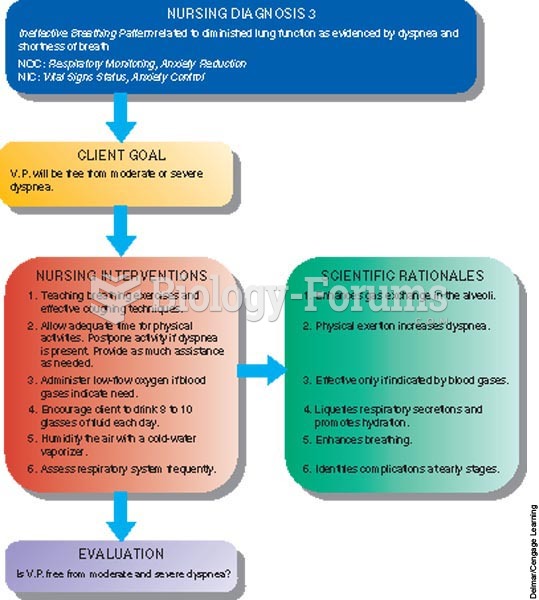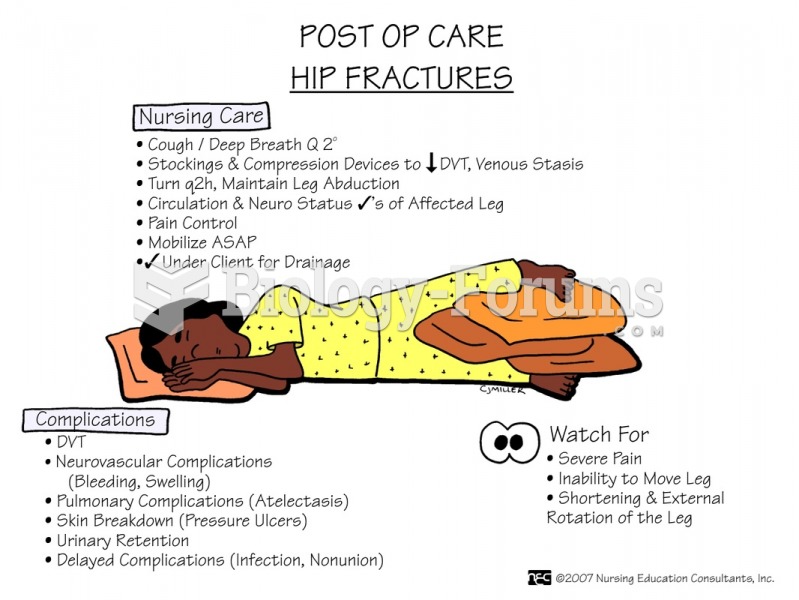Answer to Question 1
ANS: A, D, E
The most desirable position for a newborn who has TEF is supine (or sometimes prone) with the head elevated on an inclined plane of at least 30 degrees. This positioning minimizes the reflux of gastric secretions at the distal esophagus into the trachea and bronchi, especially when intraabdominal pressure is elevated. It is imperative to immediately remove any secretions that can be aspirated. Until surgery, the blind pouch is kept empty by intermittent or continuous suction through an indwelling double-lumen or Replogle catheter passed orally or nasally to the end of the pouch. In some cases, a percutaneous gastrostomy tube is inserted and left open so that any air entering the stomach through the fistula can escape, thus minimizing the danger of gastric contents being regurgitated into the trachea. The gastrostomy tube is emptied by gravity drainage. Feedings through the gastrostomy tube and irrigations with fluid are contraindicated before surgery in an infant with a distal TEF. A nasogastric tube to low intermittent suctioning could not be accomplished because the esophagus ends in a blind pouch in TEF.
Answer to Question 2
ANS: B, C, D, F
The vaccine elicits the formation of an antibody to the hepatitis B surface antigen, which is protective against hepatitis B. Hepatitis B can be transferred to an infant of a breastfeeding mother, especially if the mother's nipples are cracked. The onset of hepatitis B is insidious. Immunity develops after one exposure to hepatitis B. Hepatitis B has a carrier state. The fecal-oral route is the principal mode of transmission for hepatitis A. Hepatitis B is transmitted through the parenteral route.







